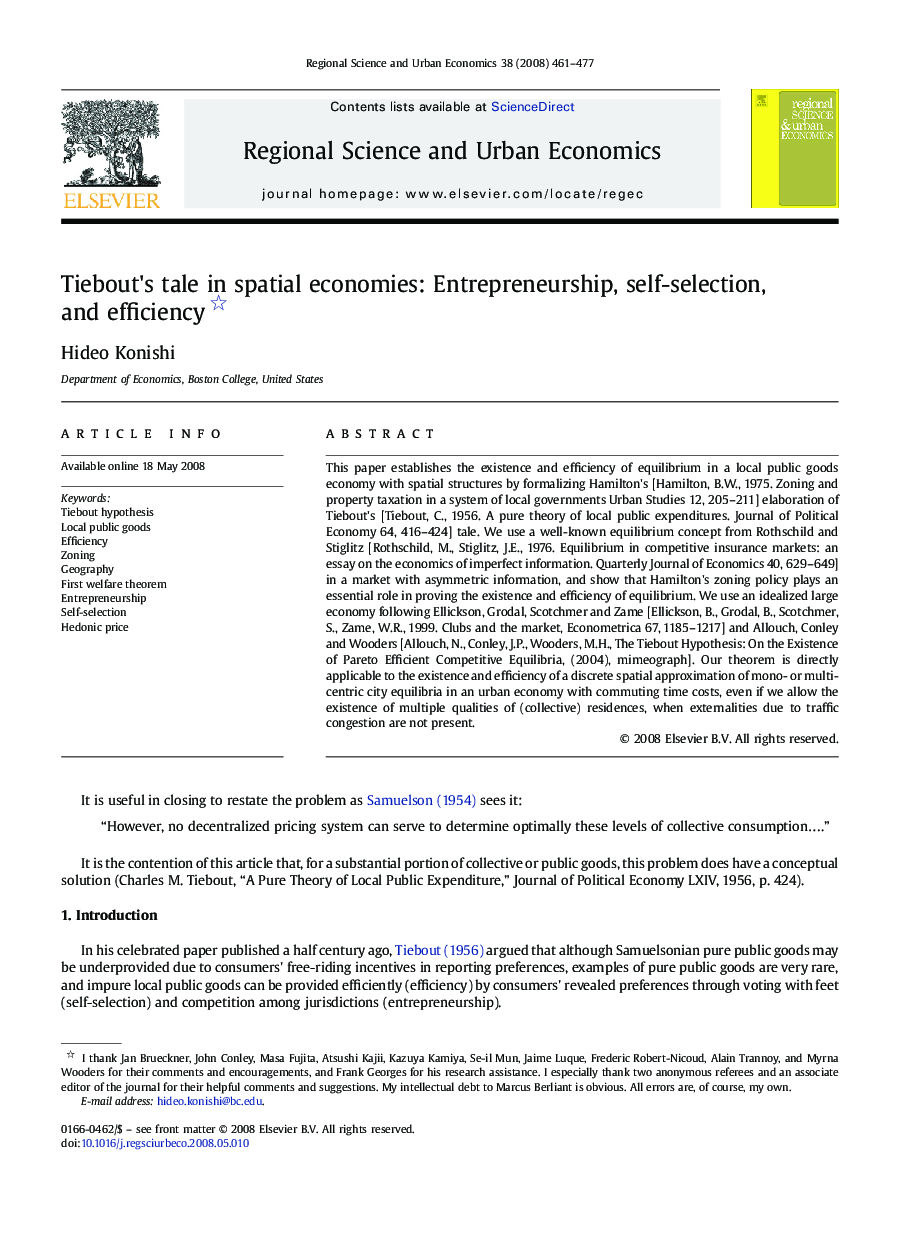| Article ID | Journal | Published Year | Pages | File Type |
|---|---|---|---|---|
| 983927 | Regional Science and Urban Economics | 2008 | 17 Pages |
This paper establishes the existence and efficiency of equilibrium in a local public goods economy with spatial structures by formalizing Hamilton's [Hamilton, B.W., 1975. Zoning and property taxation in a system of local governments Urban Studies 12, 205–211] elaboration of Tiebout's [Tiebout, C., 1956. A pure theory of local public expenditures. Journal of Political Economy 64, 416–424] tale. We use a well-known equilibrium concept from Rothschild and Stiglitz [Rothschild, M., Stiglitz, J.E., 1976. Equilibrium in competitive insurance markets: an essay on the economics of imperfect information. Quarterly Journal of Economics 40, 629–649] in a market with asymmetric information, and show that Hamilton's zoning policy plays an essential role in proving the existence and efficiency of equilibrium. We use an idealized large economy following Ellickson, Grodal, Scotchmer and Zame [Ellickson, B., Grodal, B., Scotchmer, S., Zame, W.R., 1999. Clubs and the market, Econometrica 67, 1185–1217] and Allouch, Conley and Wooders [Allouch, N., Conley, J.P., Wooders, M.H., The Tiebout Hypothesis: On the Existence of Pareto Efficient Competitive Equilibria, (2004), mimeograph]. Our theorem is directly applicable to the existence and efficiency of a discrete spatial approximation of mono- or multi-centric city equilibria in an urban economy with commuting time costs, even if we allow the existence of multiple qualities of (collective) residences, when externalities due to traffic congestion are not present.
